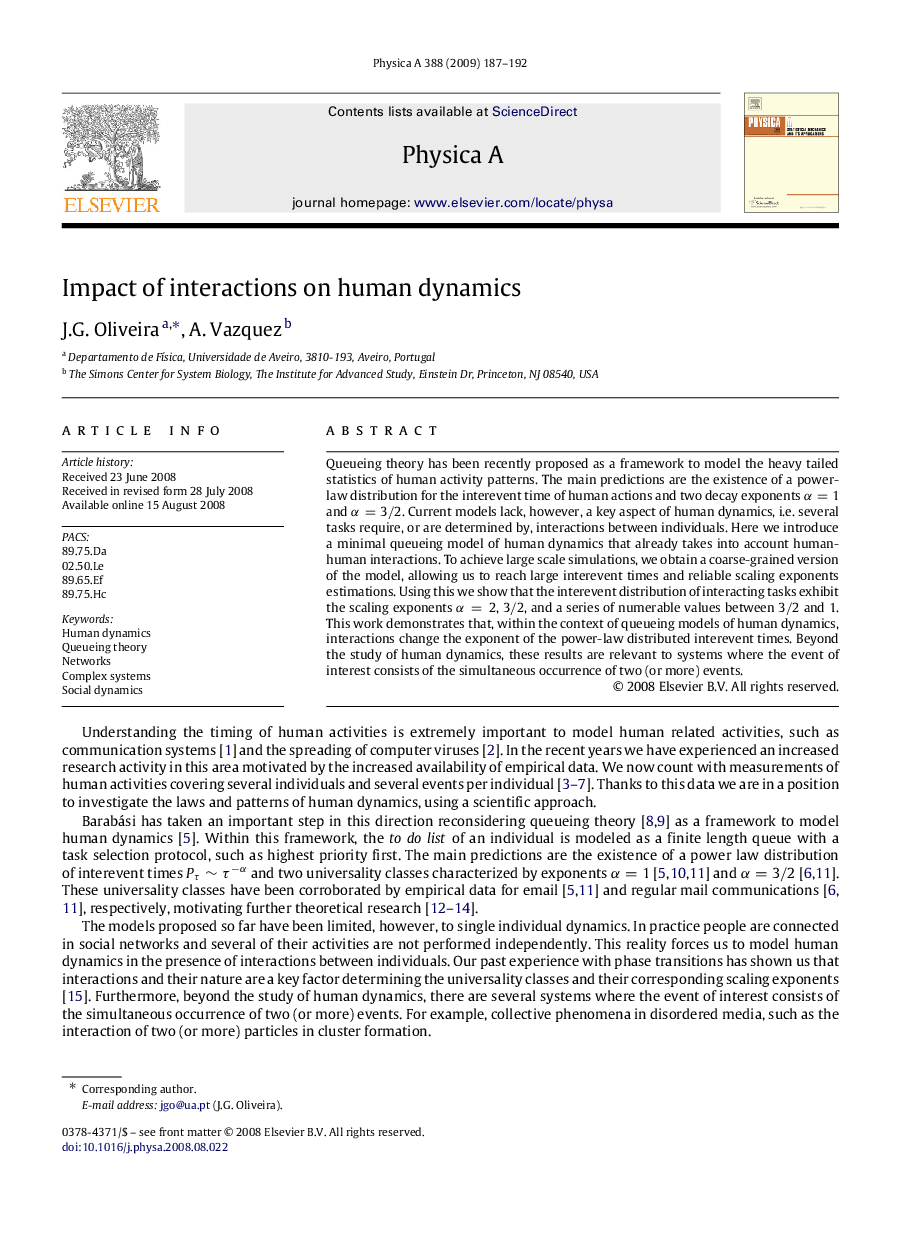| Article ID | Journal | Published Year | Pages | File Type |
|---|---|---|---|---|
| 974757 | Physica A: Statistical Mechanics and its Applications | 2009 | 6 Pages |
Queueing theory has been recently proposed as a framework to model the heavy tailed statistics of human activity patterns. The main predictions are the existence of a power-law distribution for the interevent time of human actions and two decay exponents α=1α=1 and α=3/2α=3/2. Current models lack, however, a key aspect of human dynamics, i.e. several tasks require, or are determined by, interactions between individuals. Here we introduce a minimal queueing model of human dynamics that already takes into account human-human interactions. To achieve large scale simulations, we obtain a coarse-grained version of the model, allowing us to reach large interevent times and reliable scaling exponents estimations. Using this we show that the interevent distribution of interacting tasks exhibit the scaling exponents α=2α=2, 3/2, and a series of numerable values between 3/2 and 1. This work demonstrates that, within the context of queueing models of human dynamics, interactions change the exponent of the power-law distributed interevent times. Beyond the study of human dynamics, these results are relevant to systems where the event of interest consists of the simultaneous occurrence of two (or more) events.
